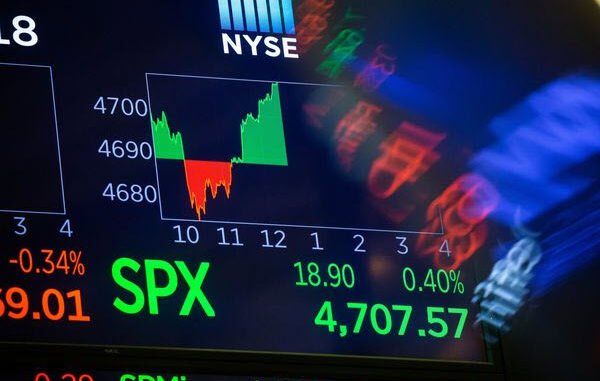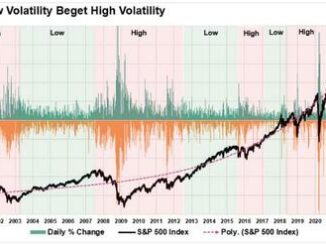
Bank of America analysts are warning clients in a note that a pattern indicative of bearish behavior is forming in the S&P 500, and it could mean significant downside risk is ahead.
Called a “Head and Shoulders” pattern by traders, it began to emerge after Friday’s selloff, and it usually indicates any bullish trends are about to come to an end. The chart pattern consists of three peaks, with a high peak in the middle which represents the head, and two lower peaks on each side of similar height, signifying shoulders.
It is believed that once it has formed, any trading which draws the chart below the “neckline” connecting the two troughs formed, will indicate a wave of selling is about to begin.
BofA technical strategist Stephen Suttmeier wrote in a Friday note to clients, “The ‘Jackson Hole’ failure at 4195-4219 (8/22 downside gap) suggests an August head and shoulders top with downside risk to the low 3900s. We are also watching potential supports at the 100- and 50-day MAs at 4073 and 3996, respectively, with tactical retracement levels at 4062 (38.2% of the June into August rally), 3981 (50%) and 3900 (61.8%),”
The head and shoulders indicator is not infallible in predicting market behavior. However other Wall Street firms are pointing to other bearish signals, following the Dow’s 1000 point drop on Friday. Many investors are now talking about the possibility the major averages will retest June’s lows.
Wolfe Research’s Rob Ginsberg, in a Saturday note argued, ”[Last week] provided the first real signs that helped to support our belief that the recent rally was nothing more than a violent bear market bounce.”
Meanwhile, Oppenheimer’s technical analyst Ari Wald is urging investors be cautious in September, when the S&P 500 will start below its 200 day moving average. He wrote, ”[Against] near-term trading concerns, we still believe June’s reset suggests a longer-term bottom is forming. Looking ahead, a rally above the S&P’s 200-day average (4,300) would confirm a bullish reversal, and a breach of its 50-day average (4,000) would threaten it.”
However BTIG’s Jonathan Krinsky noted, “the June lows will hold as weakness under 4,000 should see sentiment and positioning get bearish enough to create a decent entry point heading into the fourth quarter.”
The Daily Financial Trends

